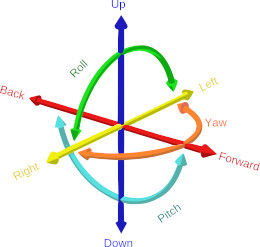The Oculut Quest is transforming the world of virtual reality with its groundbreaking design that eliminates wires and doesn’t rely on a PC. Launched alongside the Oculut Rift S, both headsets share the same price of $399 but serve different purposes. While the Rift S depends on a powerful computer, the Oculus Quest stands out as an advanced, standalone VR headset that doesn’t need a PC, providing unmatched freedom and accessibility.
In this article, we’ll explore what makes the Oculut Quest a game-changer in the VR landscape and why it’s an excellent option for users looking for an all-in-one immersive experience.
What sets the Oculut Quest apart?
The Oculus Quest is a standalone wireless VR headset running on the Android platform, much like the earlier Oculus Go. However, the Quest takes virtual reality to the next level with advanced features. Thanks to built-in cameras, it supports 6DOF (six degrees of freedom) motion tracking and comes with powerful Touch controllers for seamless interaction.
The most notable advantage of the Oculut Quest is its independence from PCs. If you’re wondering, “Does the Oculus Quest need a PC?”, the answer is a resounding no. This feature makes it a perfect choice for users who want a VR headset that doesn’t need a PC, offering more freedom and convenience for gaming and entertainment.

Oculut Quest: Powerful hardware for immersion
Under the hood, the Oculut Quest is powered by a Qualcomm Snapdragon 835 processor, a significant upgrade compared to the Oculut Go’s Snapdragon 821. It also offers a higher display resolution, delivering sharper visuals for a truly immersive experience. With storage options of 64GB or 128GB, the Quest ensures there’s plenty of space for games and apps.
The battery life ranges from 2 to 3 hours of continuous use, making it ideal for extended VR sessions. Despite being slightly heavier than the Rift S, the Quest’s black fabric exterior, adjustable head straps, and lens adjustment slider ensure comfort during long sessions. Additionally, the audio system is designed to provide clear sound without leakage, adding another layer of immersion.
Does the Oculus Quest need a PC?
One of the key features of the Oculut Quest is its total independence from wires and PCs. For users asking, “Do you need a PC for Oculus Quest?”, the answer is simple: no. This freedom makes the Quest a standout option among VR headsets.
Its built-in cameras allow users to view their surroundings without removing the headset, creating a seamless transition between the real and virtual worlds. The Quest also simplifies calibration by enabling users to set up virtual boundaries directly on the room floor, avoiding the need to walk around the room during setup.
Sensory VR experiences with Olorama
Beyond visuals and gameplay, the Oculut Quest is setting the stage for multisensory VR experiences. With technologies like Olorama Digital Smell Technology, users can enjoy environments that engage all their senses, making the VR experience richer and more immersive than ever before. Whether it’s gaming or cinematic sensory experiences, the Quest is leading the charge in redefining virtual reality.
The Oculut Quest is redefining virtual reality by eliminating wires and removing the need for a PC, delivering unmatched freedom and accessibility. For those asking, “Does the Oculus Quest need a PC?”, the clear answer is no, making it a groundbreaking choice for VR enthusiasts.
With its powerful hardware, immersive features, and integration with sensory technologies like Olorama, the Quest is more than just a VR headset—it’s the future of entertainment. If you’re searching for a VR headset that doesn’t need a PC, the Oculut Quest should be at the top of your list.



